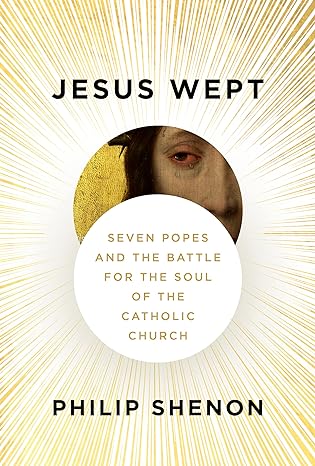Jesus Wept
Seven Popes and the Battle for the Soul of the Catholic Church
On behalf of: Kathy Robbins - The Robbins Office, Inc.
“A fleet and vivid new history of the papacy in the mass-media age . . . The narrative is alive, intricate, and reliable . . . The depth of Shenon’s reporting, combined with his narrative’s strict observance of chronology, gives fresh emphasis to material lost in the churn of the news cycle.” —The New Yorker
From a former New York Times investigative reporter, a revelatory look at the struggles inside the modern Catholic Church, told through the lives of the last seven popes
When the jolly Italian peasant-turned-cardinal Angelo Giuseppe Roncalli of Venice was elected Pope John XXIII in 1958, change was in the air. The Church, many said, had refused to enter the 20th century. In response, Pope John launched Vatican II, an “ecumenical council” that summoned hundreds of church leaders to Rome. It marked one of the most progressive turns the Church had taken in centuries: “medicine of mercy,” as Pope John called it. Yet, not everyone in the Church was prepared to accept this modernization. The battle lines were drawn.
In Jesus Wept, Philip Shenon takes us inside the Holy See to reveal its intricacies, hypocrisies, and hidden maneuverings, bringing all the momentous disputes vividly to life: priestly celibacy, birth control, homosexuality, restoring ties with other Christians and Jews, shameful sex abuse crimes, the role of women in the Church. In his rich portrayals of the popes from John to Francis, Shenon draws on research across four continents, including hundreds of interviews and the exhaustive use of archives. He also brings to light other key figures in the Church, such as Cardinal Ottaviani, the incredibly powerful, conservative, and staunchly anti-communist director of the Holy Office under Pius XII, who lived proudly by the motto Semper Idem—“Always the Same.” A consummate, vibrant history of the modern Church.
Reviews
“With sharp portrayals of the last seven men who have served as supreme pontiffs, Jesus Wept delivers a compelling recent history of the 2,000-year-old institution whose leaders reach for heaven but often fall spectacularly, sadly, into the morass of mortal fallibility . . . Nothing is spared.”—Mary Jo McConahay, The New York Times Book Review
“Gripping and damning.”—The Economist
“Lively . . . [A] crisp account . . . Popes are people, too, and one strength of Jesus Wept is that it shows them as such.”—Cullen Murphy, Air Mail
“An impressive overview of the Catholic Church told in a neat, nuanced narrative that captures its triumphs along with its abysmal failures.”—Teddy Duncan Jr., Washington Independent Review of Books
“Gripping. . . . a sweeping chronicle of the seven popes since the Second World War, starting with Pius XII and ending with Francis. It’s rich in narrative detail and will engross both neophytes and cognoscenti.”—Literary Review
“The result of prodigious research, Shenon’s book is endlessly fascinating, insightful, and brilliantly told. Even at its significant length, it is always interesting and highly readable, and Shenon’s final analysis is inarguably a marvel.”—Booklist (starred review)
“A detailed, well-researched, and quite frankly epic examination of the Roman Catholic popes of living memory . . . [Shenon’s] assessments are honest and, at times, brutal . . . Apologists for the church will doubtlessly find plenty of reason to argue with Shenon, but he also gives them a great deal of material to defend. An extraordinary accomplishment: controversial, but crucial for discussions in today’s Catholic Church.”—Kirkus Reviews (starred review)
“Insightful . . . Beginning with the reign of Pope Pius XII and the aftermath of World War II, the book explores the personalities, politics, and conflicts that marked each pope’s reign . . . Contributions from top theologians about the roles that various women played in papal households add considerable depth and detail to the stories of the popes.”—Library Journal (starred review)
“[Shenon] paints a richly detailed portrait of a complex, hierarchical, and secretive institution as it grappled with a modernizing world.”—Publishers Weekly


